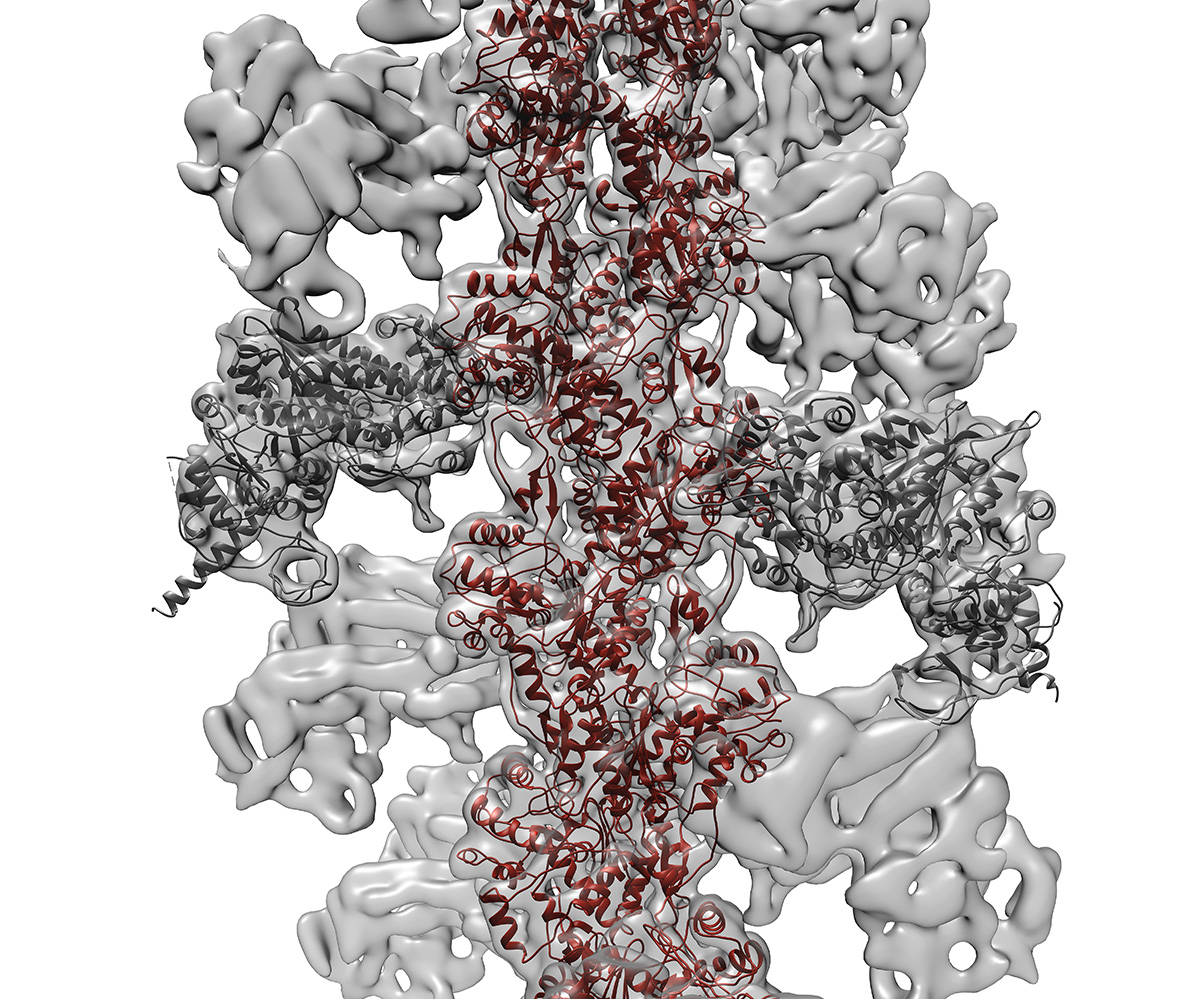Myosin motors (dark gray) walk on the filamentous actin tracks (red).
After Krishna Chinthalapudi joined The Ohio State University College of Medicine as an assistant professor, the college notified him that he could make use of the computational power of the Ohio Supercomputer Center (OSC) for his research program. Chinthalapudi, who is the principle investigator of a structural biology research group that works with large data sets, was enthusiastic about the opportunity.
“The resources are very helpful because they are on a much bigger scale than what members of my research team can run on our local workstations,” he said.
Chinthalapudi’s group is focused on understanding how different molecular motors—which he describes as nanomachines in the body—work efficiently and what functions they perform. The researchers use cryo-electron microscopy, X-ray crystallography and high-resolution fluorescence microscopy to magnify the tiny proteins, identify hotspots in them and study how the enzymes work.
“Our studies on molecular motors will provide a deeper knowledge of the structure, function and regulation of molecular motors,” Chinthalapudi said. “This knowledge will advance our understanding of emergent molecular motor functions in cells and lay the foundation for future development of precision therapeutics.”
Using OSC’s high performance computing resources on the Pitzer cluster, Chinthalapudi and colleagues were able to process and analyze images of the molecular motors and how they move along their biological tracks.
One of the benefits of using OSC is that scientists can make rapid advances in research in a shorter window of time, Chinthalapudi noted. With six members of the research team working with large amounts of data, it could take months to process the data necessary to solve a single structure.
“Losing time is not an option—we can increase the use of computational resources at OSC and maximize our productivity,” Chinthalapudi said about working with OSC.
OSC staff provided assistance with installing the software required for the research. The structural biology team also uses OSC for storing and backing up their large data sets—which is a requirement for federally funded work, Chinthalapudi explained. The team’s research is supported by a grant from the National Institutes of Health.
Chinthalapudi noted that many researchers in the structural biology field struggle to process large data. He encourages colleagues and large research teams in this discipline—whether at Ohio State or elsewhere—to explore the resources and capabilities of OSC.
“It saves time; it saves resources,” he said.
